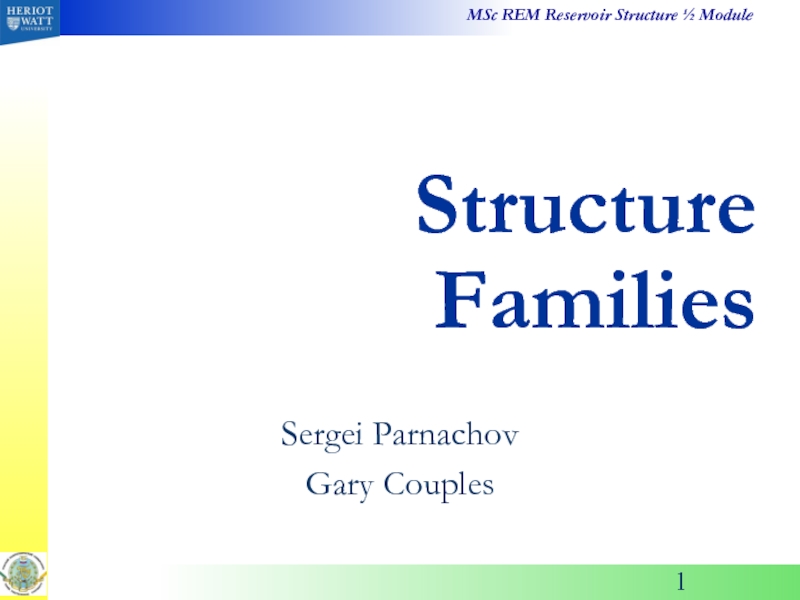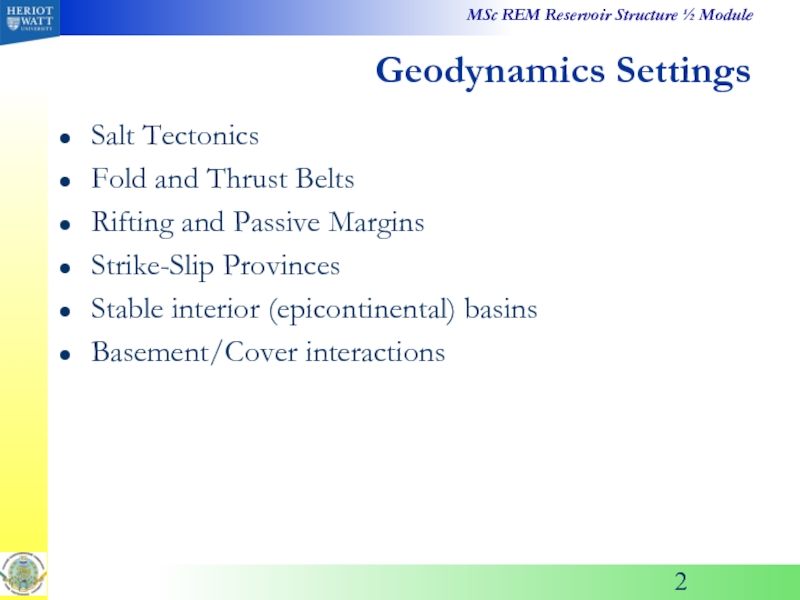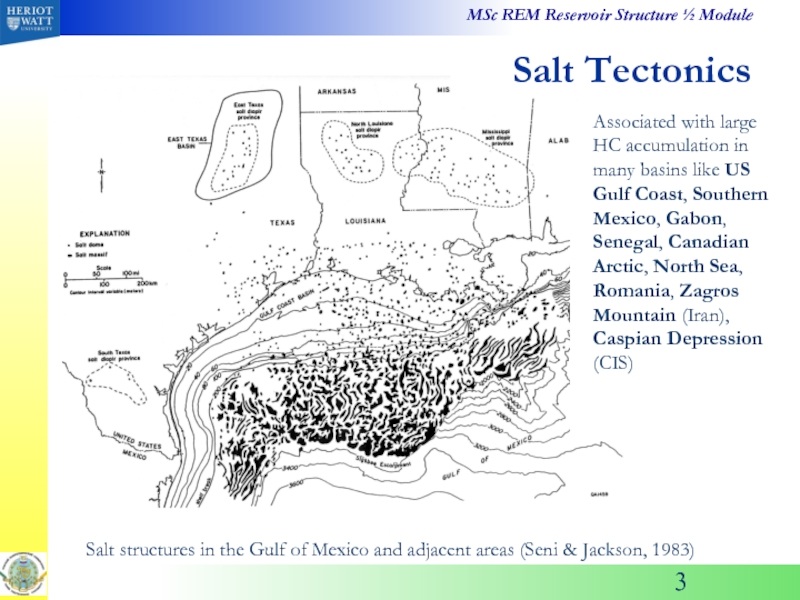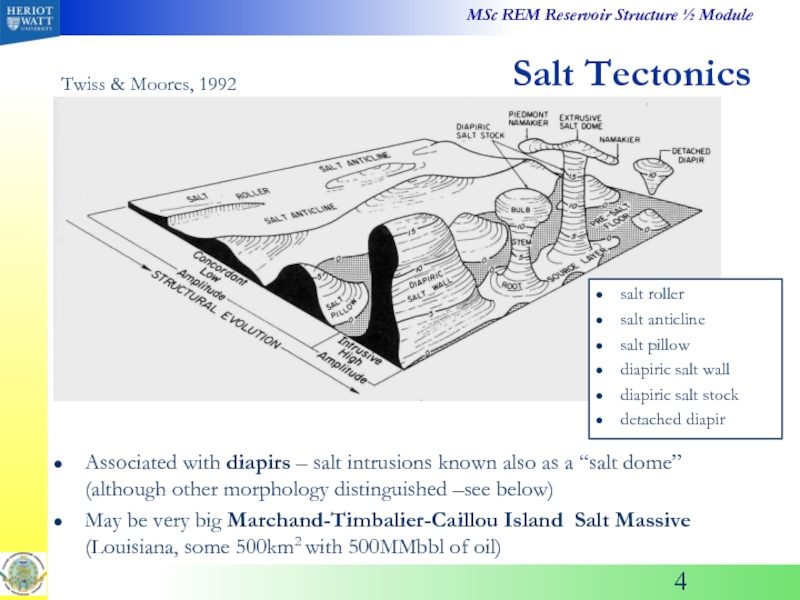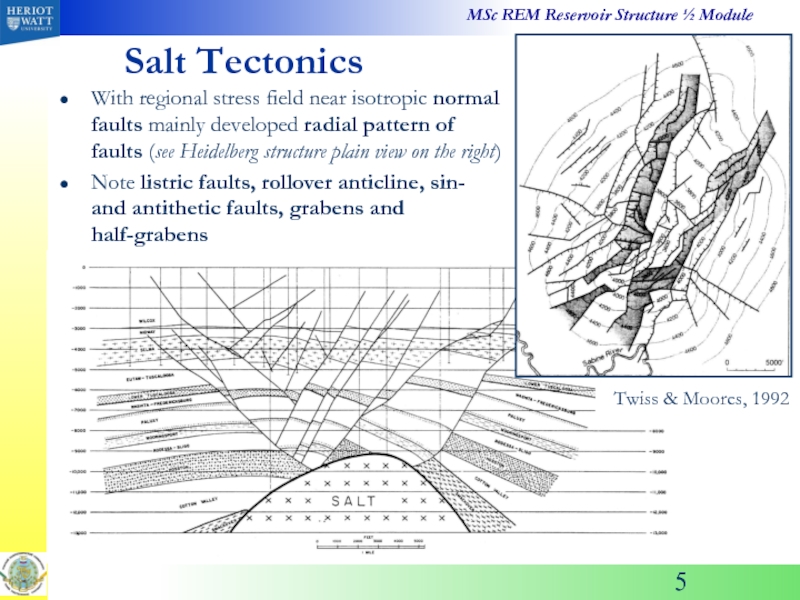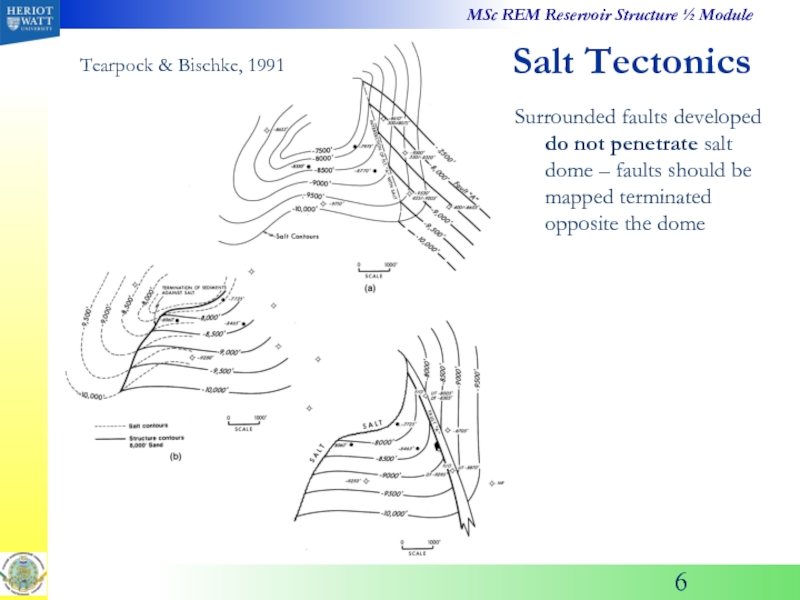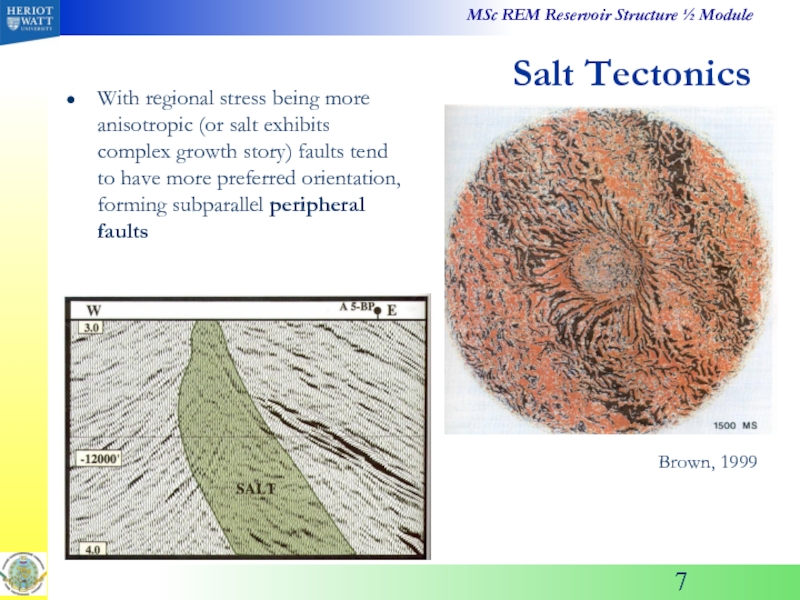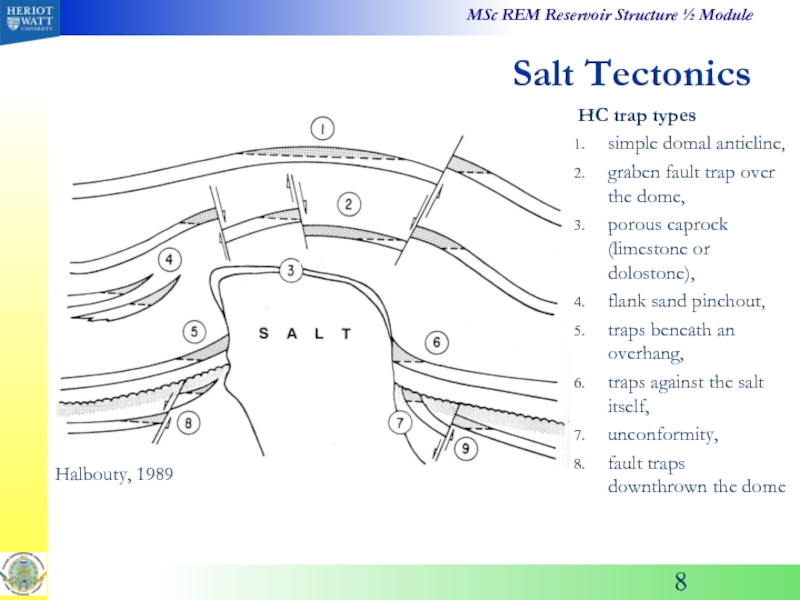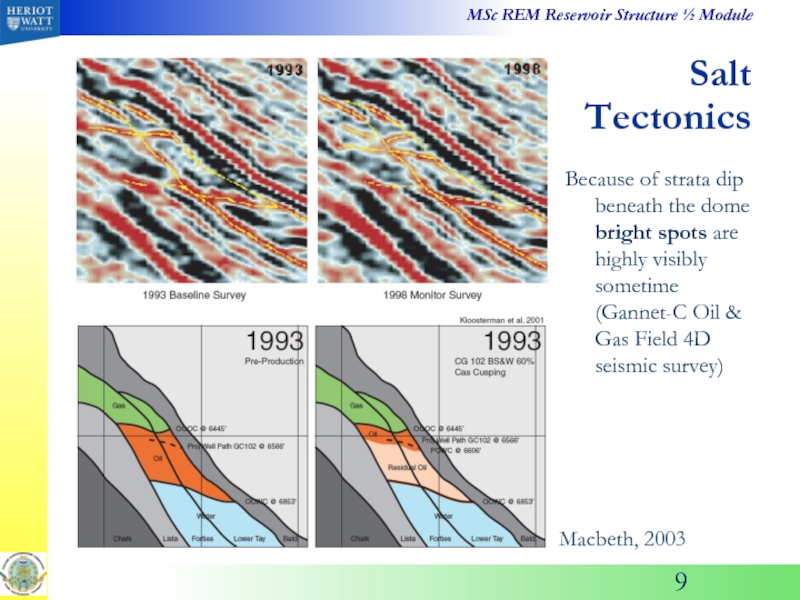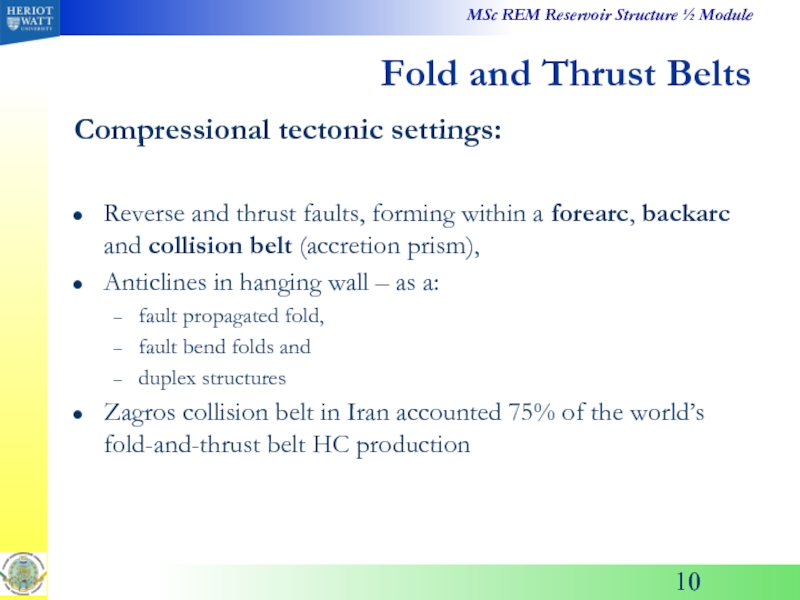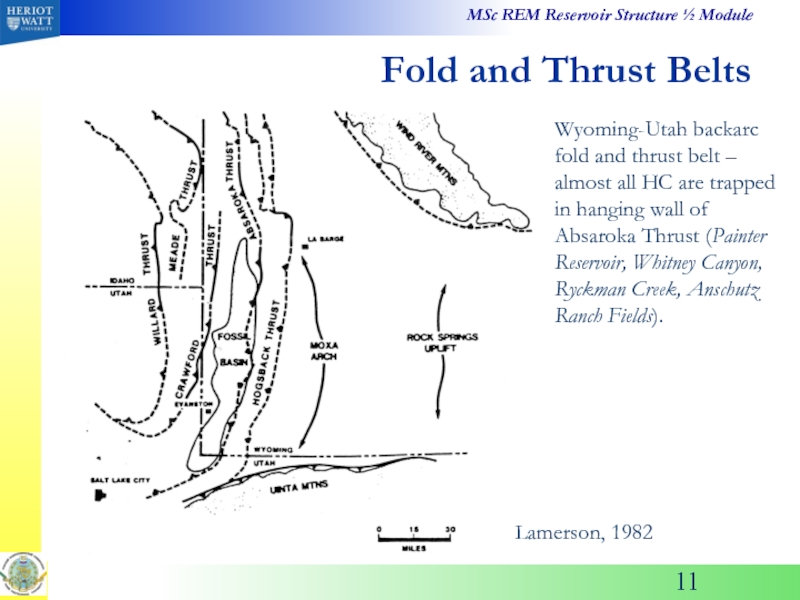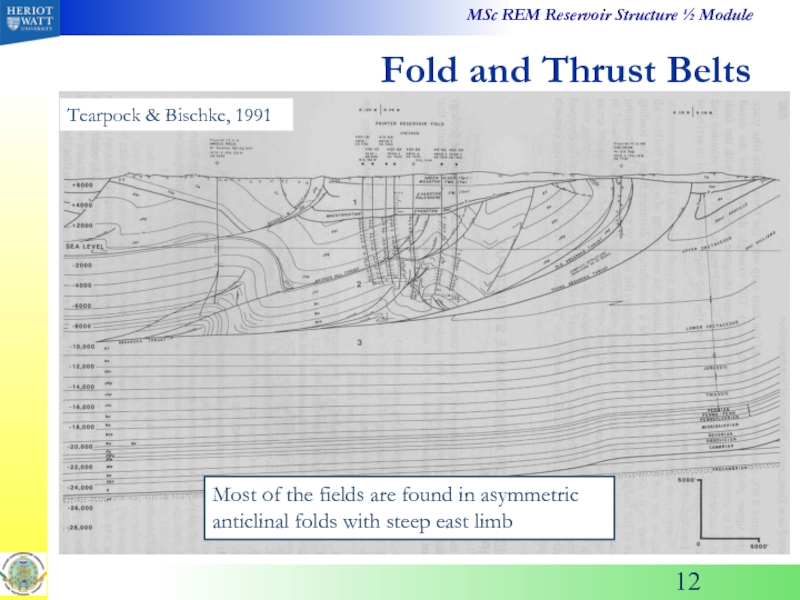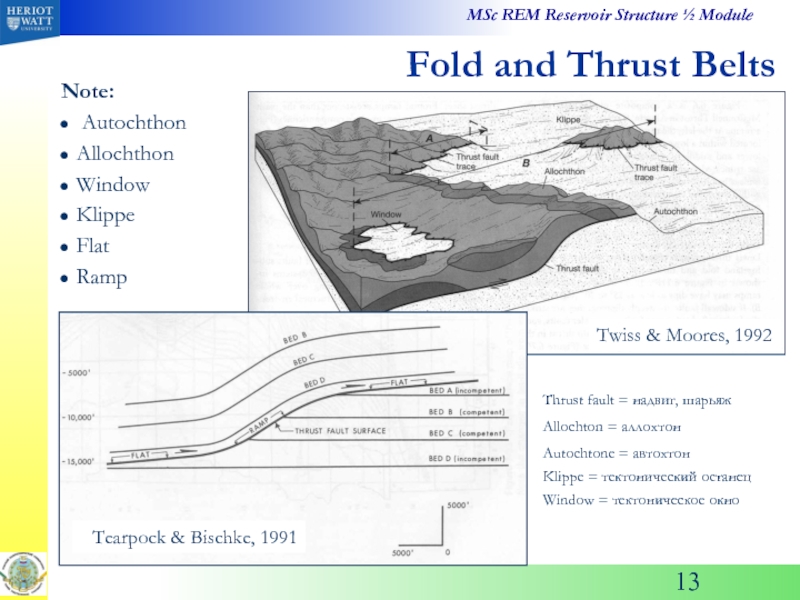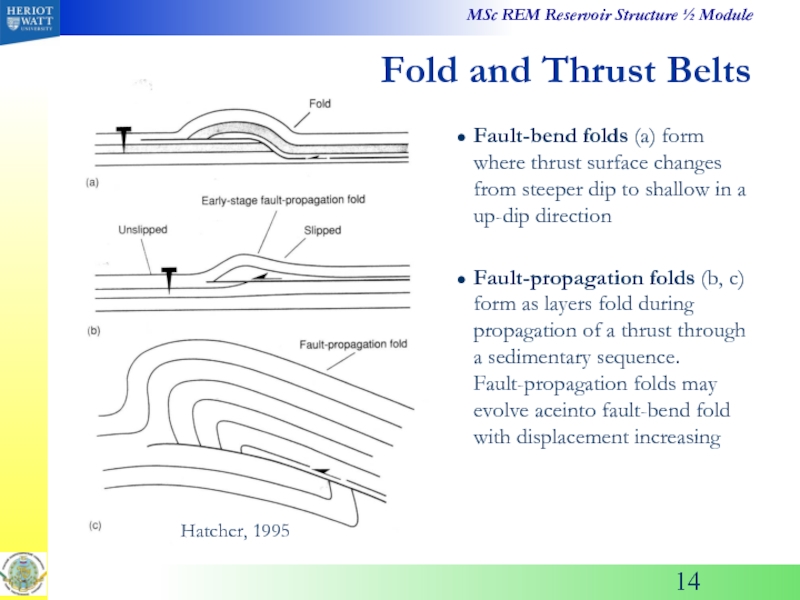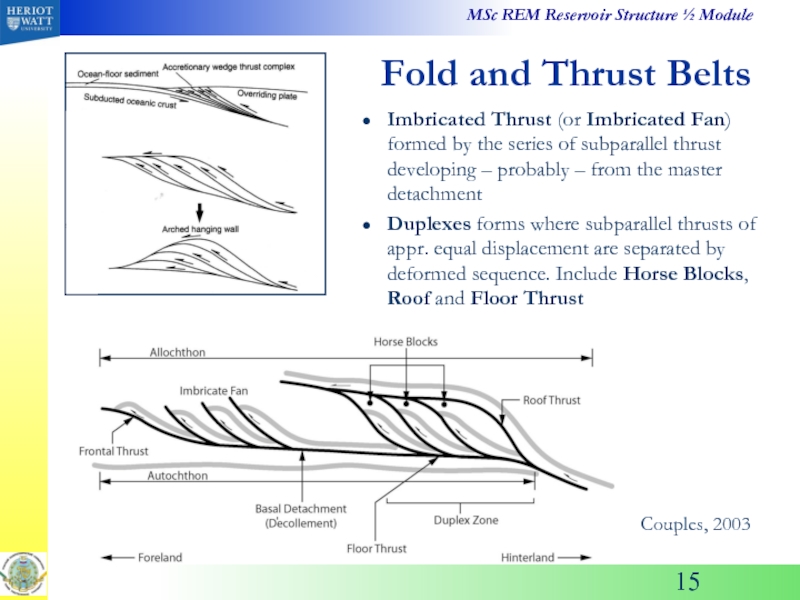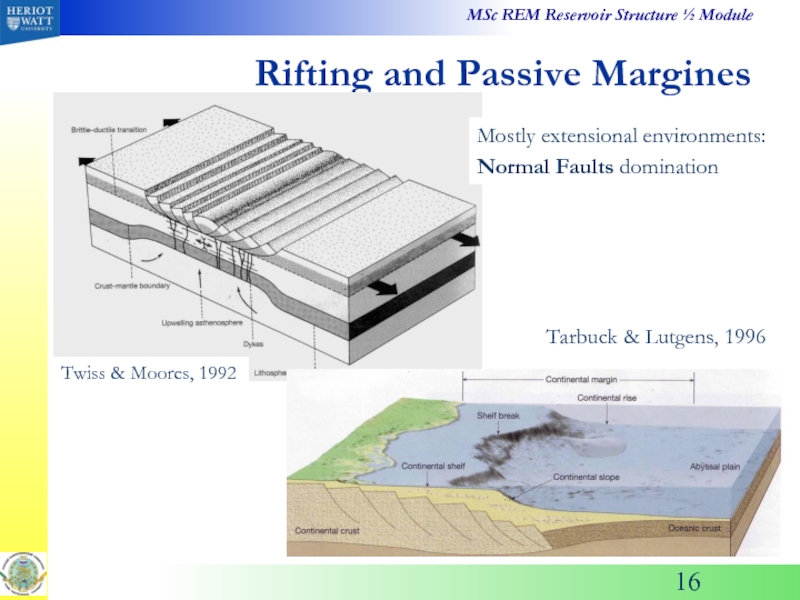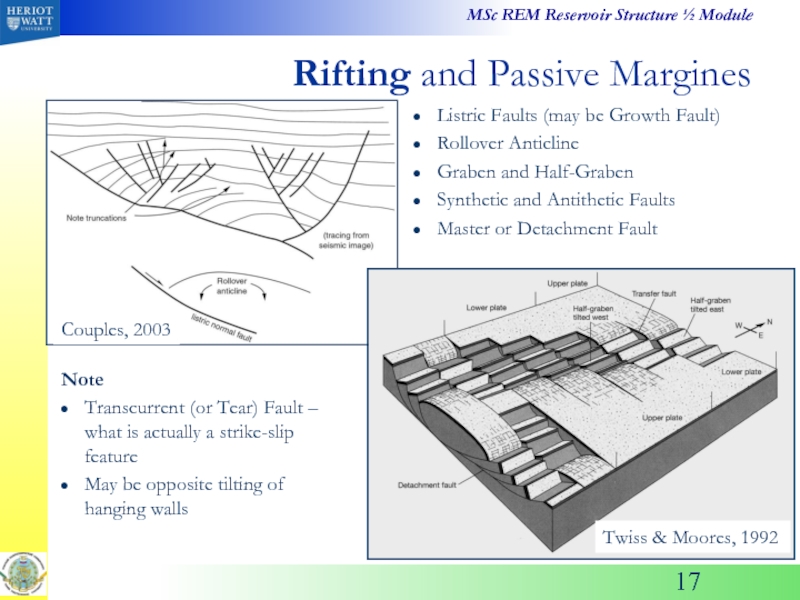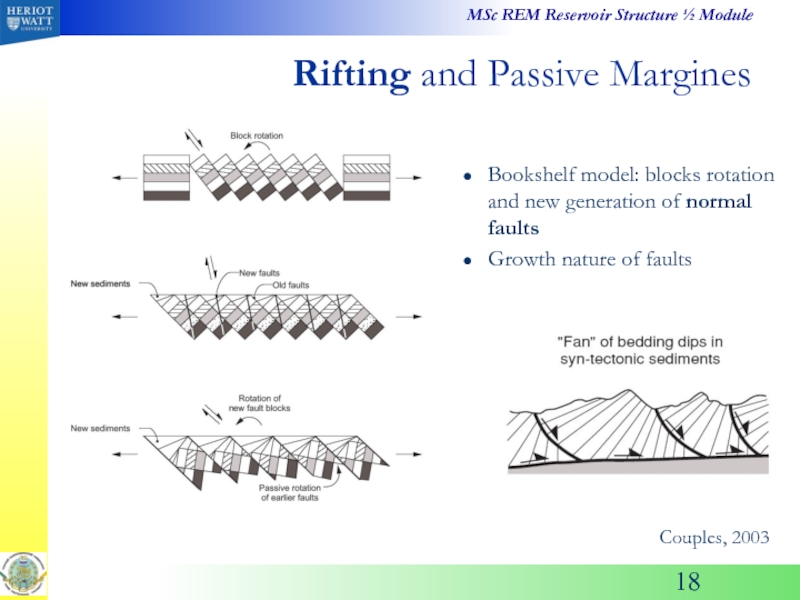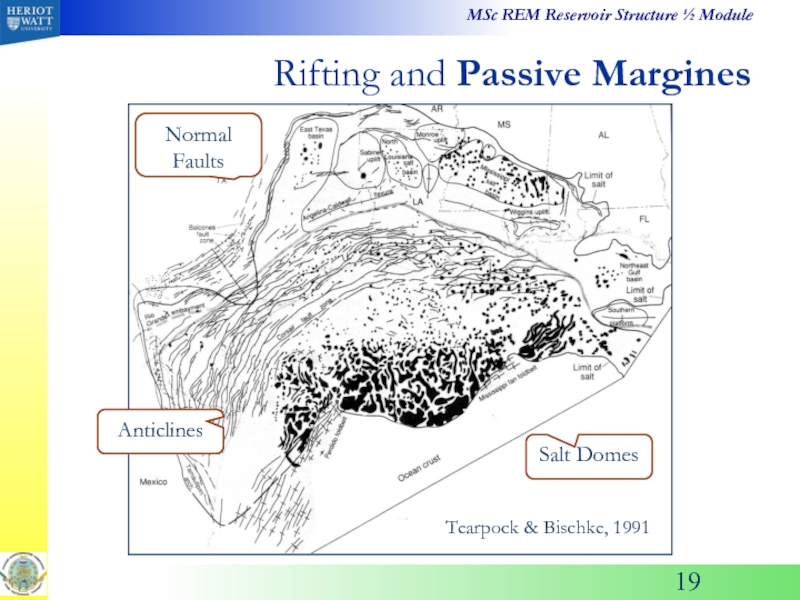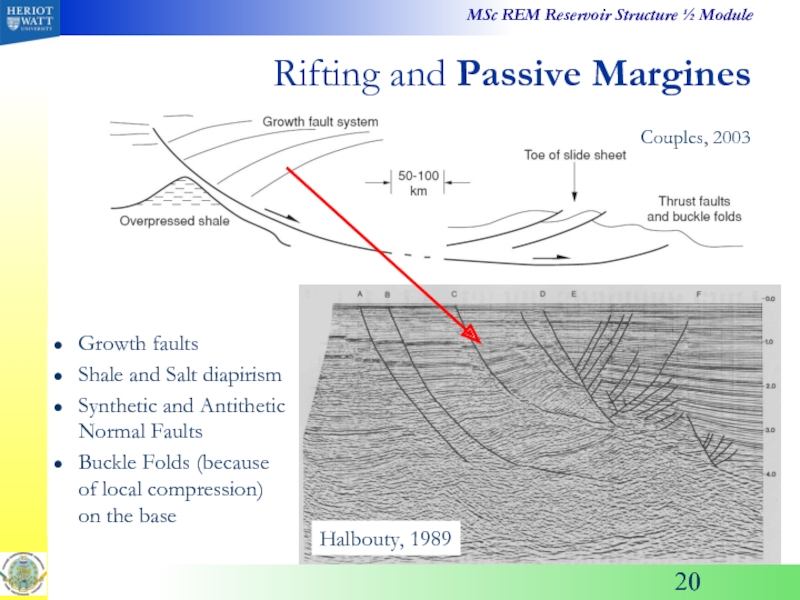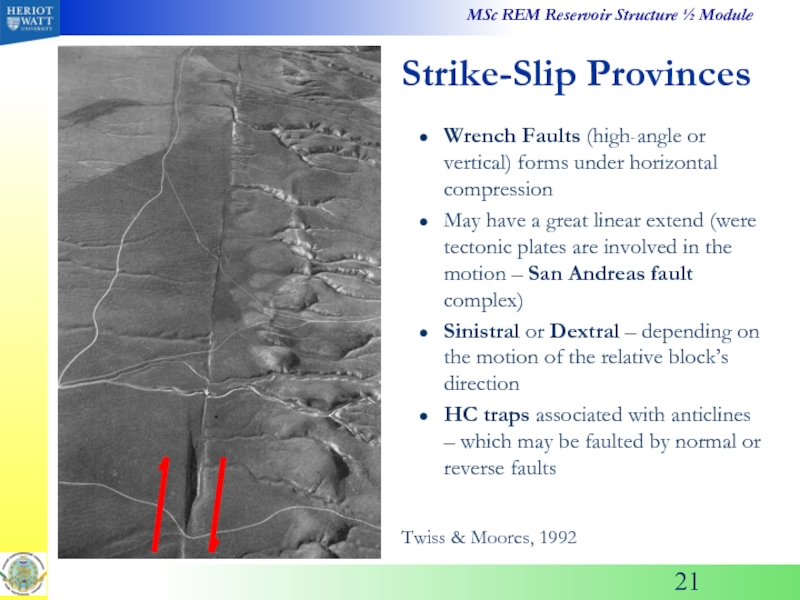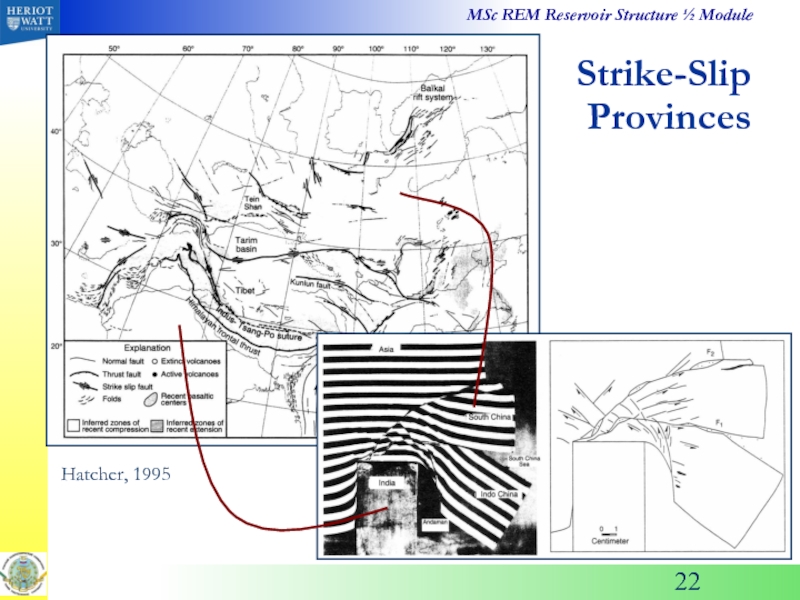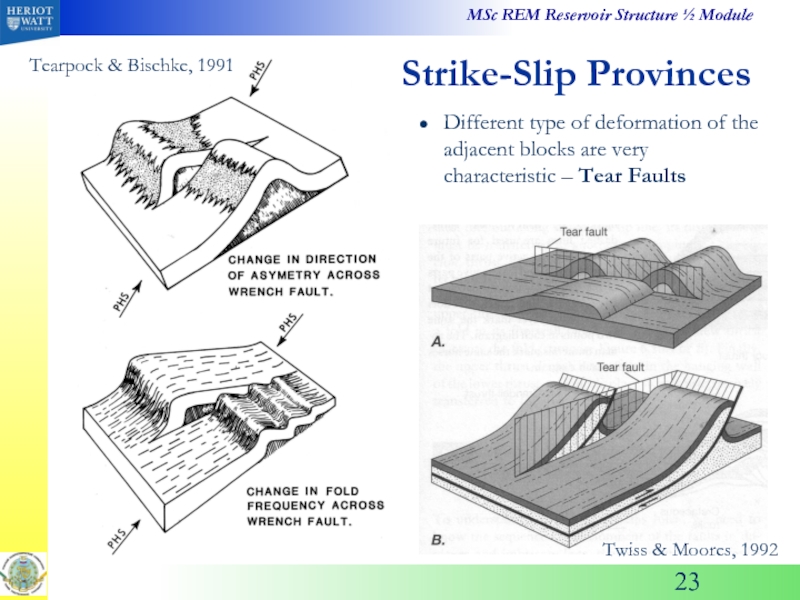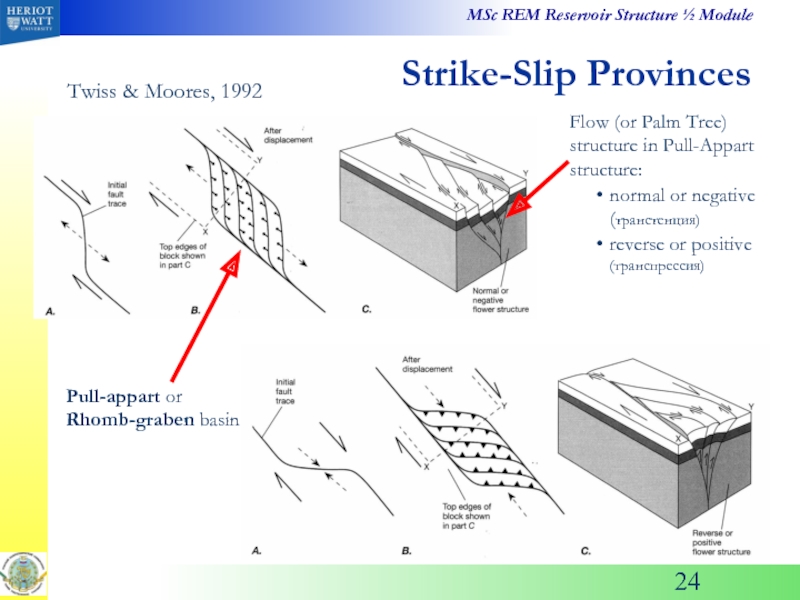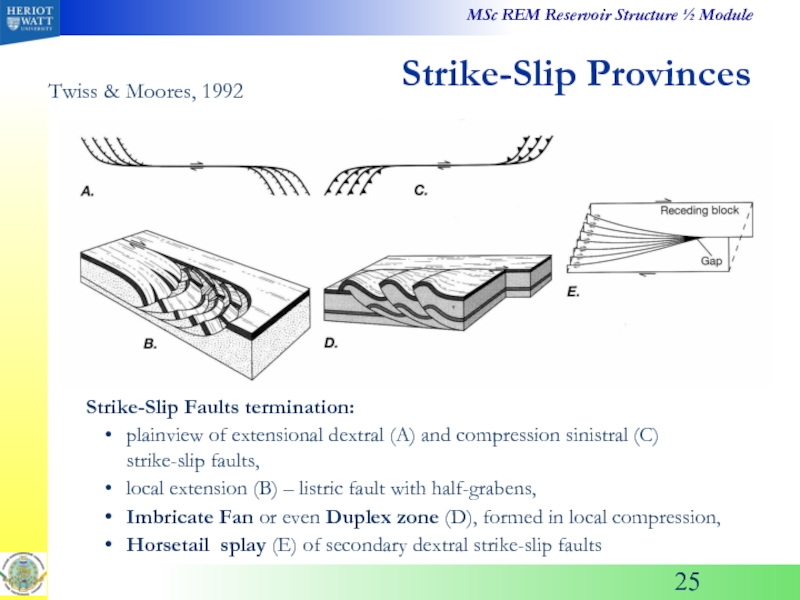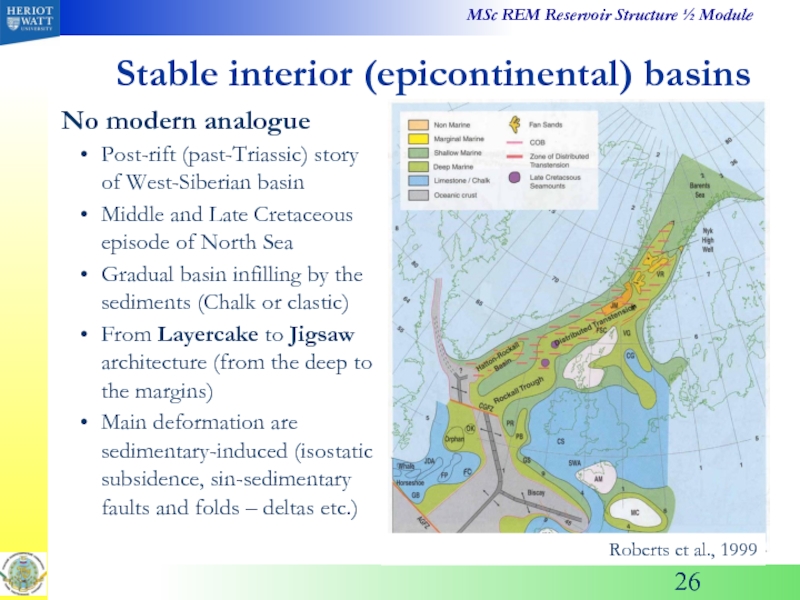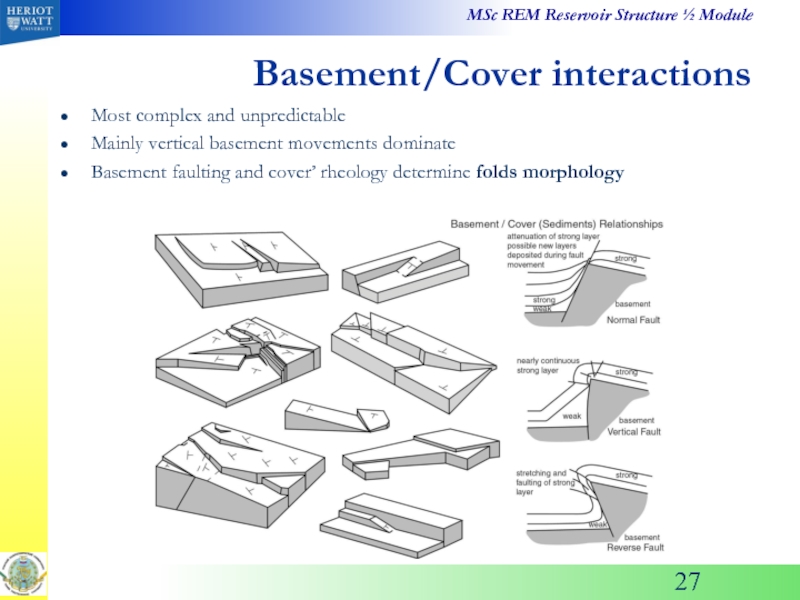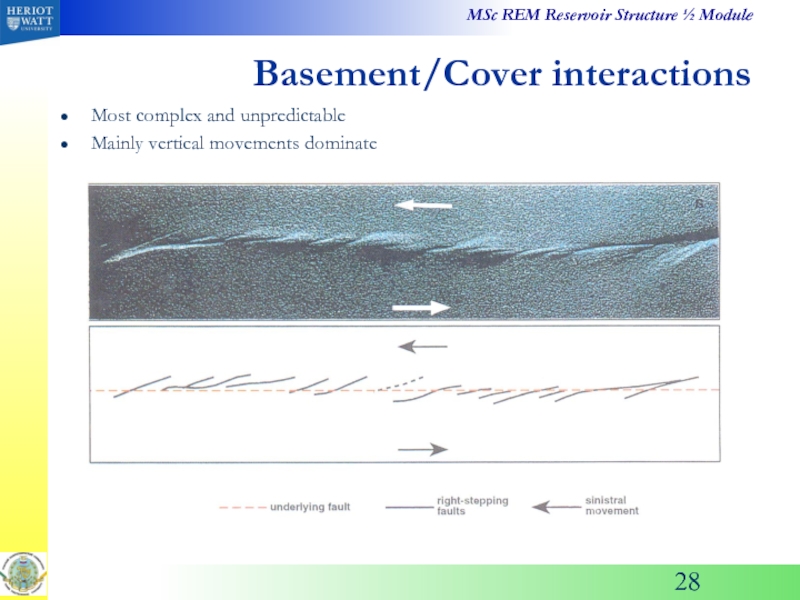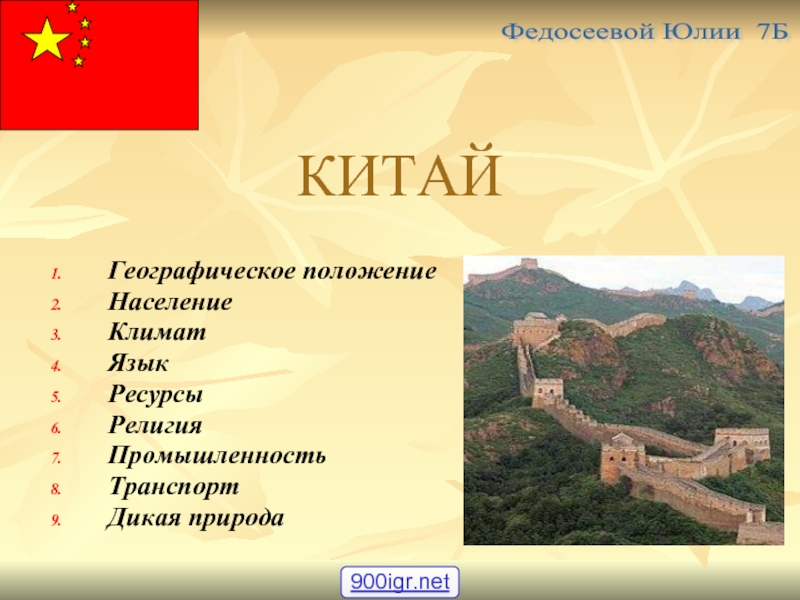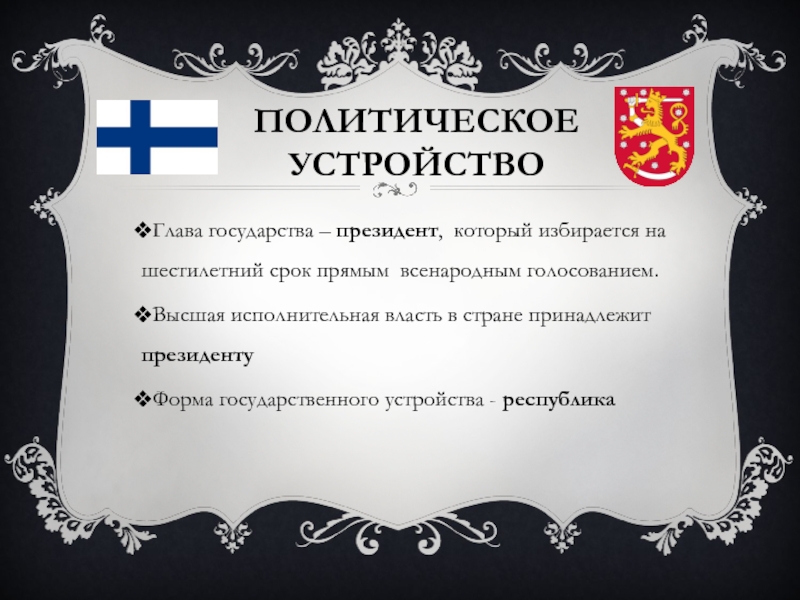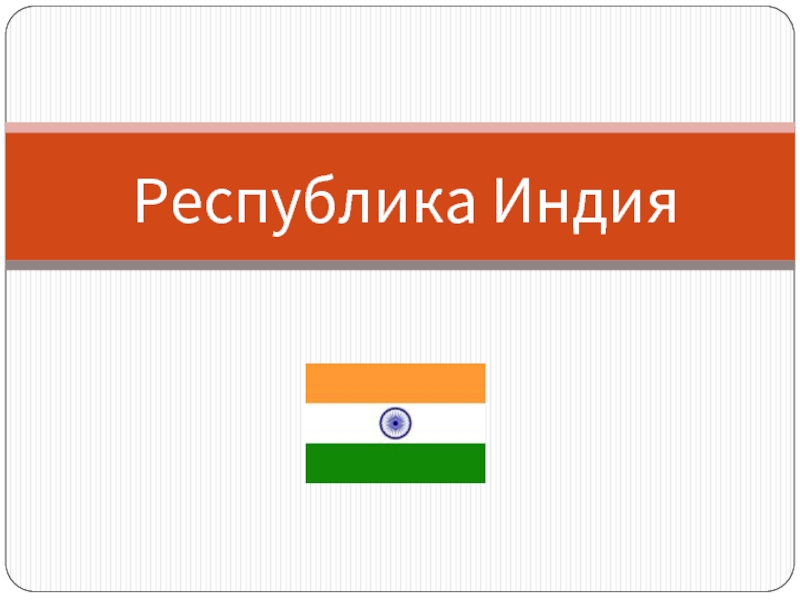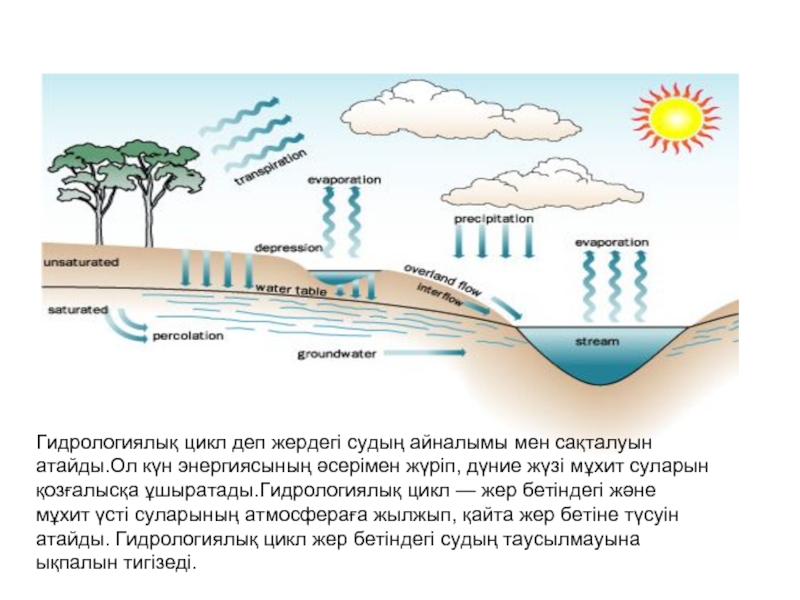- Главная
- Разное
- Дизайн
- Бизнес и предпринимательство
- Аналитика
- Образование
- Развлечения
- Красота и здоровье
- Финансы
- Государство
- Путешествия
- Спорт
- Недвижимость
- Армия
- Графика
- Культурология
- Еда и кулинария
- Лингвистика
- Английский язык
- Астрономия
- Алгебра
- Биология
- География
- Детские презентации
- Информатика
- История
- Литература
- Маркетинг
- Математика
- Медицина
- Менеджмент
- Музыка
- МХК
- Немецкий язык
- ОБЖ
- Обществознание
- Окружающий мир
- Педагогика
- Русский язык
- Технология
- Физика
- Философия
- Химия
- Шаблоны, картинки для презентаций
- Экология
- Экономика
- Юриспруденция
Geodynamics settings презентация
Содержание
- 1. Geodynamics settings
- 2. Geodynamics Settings Salt Tectonics Fold and Thrust
- 3. Salt Tectonics Salt structures in the Gulf
- 4. Salt Tectonics Associated with diapirs – salt
- 5. Salt Tectonics With regional stress field near
- 6. Salt Tectonics Surrounded faults developed do not
- 7. Salt Tectonics With regional stress being more
- 8. Salt Tectonics Halbouty, 1989 HC trap types
- 9. Salt Tectonics Macbeth, 2003 Because
- 10. Fold and Thrust Belts Compressional tectonic settings:
- 11. Fold and Thrust Belts Wyoming-Utah backarc fold
- 12. Fold and Thrust Belts Lamerson, 1982 Most
- 13. Fold and Thrust Belts Twiss & Moores,
- 14. Fault-bend folds (a) form where thrust surface
- 15. Imbricated Thrust (or Imbricated Fan) formed by
- 16. Rifting and Passive Margines Mostly extensional environments:
- 17. Rifting and Passive Margines Listric Faults (may
- 18. Rifting and Passive Margines Couples, 2003 Bookshelf
- 19. Rifting and Passive Margines Tearpock & Bischke, 1991 Salt Domes Normal Faults Anticlines
- 20. Rifting and Passive Margines Growth faults Shale
- 21. Strike-Slip Provinces Wrench Faults (high-angle or vertical)
- 22. Strike-Slip Provinces Hatcher, 1995
- 23. Strike-Slip Provinces Different type of deformation of
- 24. Strike-Slip Provinces Flow (or Palm Tree) structure
- 25. Strike-Slip Provinces Twiss & Moores, 1992 Strike-Slip
- 26. Stable interior (epicontinental) basins No modern analogue
- 27. Basement/Cover interactions Most complex and unpredictable Mainly
- 28. Basement/Cover interactions Most complex and unpredictable Mainly vertical movements dominate
Слайд 2Geodynamics Settings
Salt Tectonics
Fold and Thrust Belts
Rifting and Passive Margins
Strike-Slip Provinces
Stable interior
Basement/Cover interactions
Слайд 3Salt Tectonics
Salt structures in the Gulf of Mexico and adjacent areas
Associated with large HC accumulation in many basins like US Gulf Coast, Southern Mexico, Gabon, Senegal, Canadian Arctic, North Sea, Romania, Zagros Mountain (Iran), Caspian Depression (CIS)
Слайд 4Salt Tectonics
Associated with diapirs – salt intrusions known also as a
May be very big Marchand-Timbalier-Caillou Island Salt Massive (Louisiana, some 500km2 with 500MMbbl of oil)
salt roller
salt anticline
salt pillow
diapiric salt wall
diapiric salt stock
detached diapir
Twiss & Moores, 1992
Слайд 5Salt Tectonics
With regional stress field near isotropic normal faults mainly developed
Note listric faults, rollover anticline, sin- and antithetic faults, grabens and half-grabens
Twiss & Moores, 1992
Слайд 6Salt Tectonics
Surrounded faults developed do not penetrate salt dome – faults
Twiss & Moores, 1992
Tearpock & Bischke, 1991
Слайд 7Salt Tectonics
With regional stress being more anisotropic (or salt exhibits complex
Brown, 1999
Слайд 8Salt Tectonics
Halbouty, 1989
HC trap types
simple domal anticline,
graben fault trap over the
porous caprock (limestone or dolostone),
flank sand pinchout,
traps beneath an overhang,
traps against the salt itself,
unconformity,
fault traps downthrown the dome
Слайд 9Salt
Tectonics
Macbeth, 2003
Because of strata dip beneath the dome bright
Слайд 10Fold and Thrust Belts
Compressional tectonic settings:
Reverse and thrust faults, forming within
Anticlines in hanging wall – as a:
fault propagated fold,
fault bend folds and
duplex structures
Zagros collision belt in Iran accounted 75% of the world’s fold-and-thrust belt HC production
Слайд 11Fold and Thrust Belts
Wyoming-Utah backarc fold and thrust belt – almost
Lamerson, 1982
Слайд 12Fold and Thrust Belts
Lamerson, 1982
Most of the fields are found in
Tearpock & Bischke, 1991
Слайд 13Fold and Thrust Belts
Twiss & Moores, 1992
Note:
Autochthon
Allochthon
Window
Klippe
Flat
Ramp
Tearpock & Bischke, 1991
Thrust
Allochton = аллохтон
Autochtone = автохтон
Klippe = тектонический останец
Window = тектоническое окно
Слайд 14Fault-bend folds (a) form where thrust surface changes from steeper dip
Fault-propagation folds (b, c) form as layers fold during propagation of a thrust through a sedimentary sequence. Fault-propagation folds may evolve aceinto fault-bend fold with displacement increasing
Fold and Thrust Belts
Hatcher, 1995
Слайд 15Imbricated Thrust (or Imbricated Fan) formed by the series of subparallel
Duplexes forms where subparallel thrusts of appr. equal displacement are separated by deformed sequence. Include Horse Blocks, Roof and Floor Thrust
Fold and Thrust Belts
Couples, 2003
Слайд 16Rifting and Passive Margines
Mostly extensional environments:
Normal Faults domination
Twiss & Moores, 1992
Tarbuck
Слайд 17Rifting and Passive Margines
Listric Faults (may be Growth Fault)
Rollover Anticline
Graben and
Synthetic and Antithetic Faults
Master or Detachment Fault
Couples, 2003
Twiss & Moores, 1992
Note
Transcurrent (or Tear) Fault – what is actually a strike-slip feature
May be opposite tilting of hanging walls
Слайд 18Rifting and Passive Margines
Couples, 2003
Bookshelf model: blocks rotation and new generation
Growth nature of faults
Слайд 20Rifting and Passive Margines
Growth faults
Shale and Salt diapirism
Synthetic and Antithetic Normal
Buckle Folds (because of local compression) on the base
Couples, 2003
Halbouty, 1989
Слайд 21Strike-Slip Provinces
Wrench Faults (high-angle or vertical) forms under horizontal compression
May have
Sinistral or Dextral – depending on the motion of the relative block’s direction
HC traps associated with anticlines – which may be faulted by normal or reverse faults
Twiss & Moores, 1992
Слайд 23Strike-Slip Provinces
Different type of deformation of the adjacent blocks are very
Tearpock & Bischke, 1991
Twiss & Moores, 1992
Слайд 24Strike-Slip Provinces
Flow (or Palm Tree) structure in Pull-Appart structure:
normal or negative
reverse or positive (транспрессия)
Twiss & Moores, 1992
Pull-appart or Rhomb-graben basin
Слайд 25Strike-Slip Provinces
Twiss & Moores, 1992
Strike-Slip Faults termination:
plainview of extensional dextral (A)
local extension (B) – listric fault with half-grabens,
Imbricate Fan or even Duplex zone (D), formed in local compression,
Horsetail splay (E) of secondary dextral strike-slip faults
Слайд 26Stable interior (epicontinental) basins
No modern analogue
Post-rift (past-Triassic) story of West-Siberian
Middle and Late Cretaceous episode of North Sea
Gradual basin infilling by the sediments (Chalk or clastic)
From Layercake to Jigsaw architecture (from the deep to the margins)
Main deformation are sedimentary-induced (isostatic subsidence, sin-sedimentary faults and folds – deltas etc.)
Roberts et al., 1999
